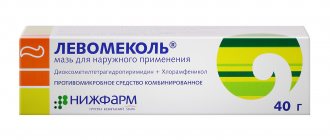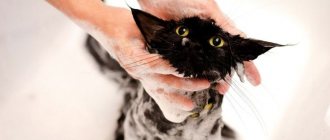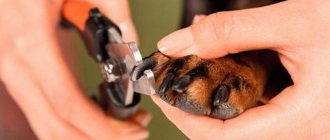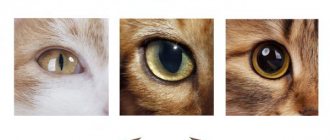Save the article:
For many people, a four-legged friend is not just a creature from the natural world, but truly a Friend with a capital F. And it’s scary to lose such a pet: in order for your beloved purr to be found if lost, it is no longer necessary to attach a medallion with an engraving of the owners’ phone number to the collar. Instead, today a procedure such as microchipping cats .
Even if someone tries to pass off someone else’s cat as their own, the chip will indicate who is right and who is wrong. In addition to establishing the rights of the owner of the animal, with such a kitty you can cross the border of the state, because this is a full-fledged passport of the animal. Using this modern procedure, it is easy to monitor representatives of elite breeds. In a word, it is very necessary to microchip your pet.
What is chipping
A chip is a microcircuit with a unique 15-digit code, a receiver, a transmitter, a multi-turn antenna and a code memory unit. The microcircuit is contained in a sterile biocompatible glass capsule. The size is slightly larger than a grain of rice. The length of the device is 13 mm, diameter 2 mm. The unique number remains assigned to the cat for life; this original passport is entered into the database of the world electronic system (ISO 11784, ISO 11785 standards).
What information does the chip carry?
- Date of Birth;
- gender of the animal;
- breed;
- color;
- owner's personal data;
- owner's phone number.
This information will be enough to clarify the “personality” of the cat.
If you are constantly afraid of your cat’s whereabouts, you can additionally purchase a Glonass GPS beacon for microchipping.
How data is read from a microchip
global $ads_google;
//data-ad-slot=”2475549904″ $ads_google = empty($ads_google) ? false : true; ?> if ($ads_google == false) {?> $ads_google = true; ?> } ?> The chip itself does not transmit any electromagnetic waves, just as it cannot be a GPS device, although such a nuance of chipping would significantly facilitate the search for a missing cat without an additional Glonass-GPS system card.
To read all the information, use a scanner designed for this purpose. The implanted device is passive until it encounters the scanner. There is no radiation from the microchip.
If the scanner shows the owners of a lost cat that kind people took to a shelter or veterinary clinic, then specialists call the grieving owner back and tell him the good news about the found pet. Although this is an excellent development for the loss of a cat, it sometimes happens that the animal does not end up in a facility with scanners that can read such information. In this case, you need to continue searching using all available methods.
Do not forget that all changes regarding the phone number or owner's name must be updated in the microchip database. The service life of the product is at least 25 years and does not require replacement.
Questions and answers
Despite the abundance of information on this topic, pet owners have questions regarding RFID.
- Is the procedure actually pain free ? The cat does not suffer during implantation, although there are exceptions. So, she may be in pain if an inexperienced veterinarian takes on the matter. Therefore, it is better to seek help from specialists who often perform chipping.
- What difficulties may arise when implanting a chip ? It is especially difficult to microchip animals with long hair. An inexperienced veterinarian may simply puncture the skin with a needle. Therefore, the capsule, instead of getting into the dermis, ends up in the fur and is lost.
- Is it easy to get rid of the chip? If a surgeon gets down to business, it will not be difficult for him to remove the foreign body; the capsule can be easily palpated. To pull it out, just make a small cut. But they will not carry out such manipulations with a purebred cat. This leaves noticeable scars, which affects the value of the specimen. But with other individuals this does not make sense.
- Is it possible to implant a chip yourself? RFID kits are sold in online stores, or you can purchase them yourself. This is often cheaper than in a clinic. But the procedure must be carried out by a veterinarian. If an inexperienced person takes on the matter, the risk of blood poisoning increases many times over, which can cause the pet to die.
- How long does the chip last? The capsule has an unlimited validity period if the manufacturer is reliable. Under these conditions, the microcircuit will be readable throughout its life.
Cat owners have many questions about chips
- Will a chip harm a cat? If the implantation was carried out by a competent veterinarian, then there are no risks for the animal. The device itself does not emit harmful waves and is active only at the moment when the scanner reads information. But even in this case, it remains safe for the pet.
- Can the chip move? Yes, during wear the capsule sometimes moves 2–3 cm or more (migrate). But with the correct choice of the chip insertion site, the displacement is minimal. In any case, this does not affect the cat's condition. The only downside is that the scanning procedure becomes more complicated. The main factors that provoke displacement: patient agitation, which interferes with correct insertion of the chip, ignoring medical contraindications, incomplete exit of the chip from the needle barrel.
- At what age is a microcircuit implanted? Kittens are microchipped at 5-6 weeks of age. According to international law, if a chip is not installed for the first vaccination, such a vaccination may not be recognized. But the procedure can be performed at any age. This factor does not affect the body's reaction in any way.
Why is it better to microchip a cat?
The benefits of microchipping cats are just beginning to be appreciated in different countries. The procedure itself was introduced not so long ago, and debates around its significance are still ongoing.
Advantages of introducing a microchip into cats:
- the chances of returning a lost animal are high;
- in good veterinary clinics, a scanner quickly reads information and simplifies the procedure for accepting an animal;
- a chipped cat cannot be replaced, and a stolen animal cannot be used at exhibitions.
It is worth mentioning that scanners for reading information from a chip are not yet available everywhere. But this is good protection for seals of rare and especially valuable breeds that attend international exhibitions.
If you want to take your cat abroad, you should know that not all countries accept animals without a chip.
Advantages of chipping dogs for export abroad
This procedure will not require much time. The electronic storage medium can be introduced to absolutely any dog. The recording in the transponder memory will remain for the entire life of the pet. There is no great need to carry with you a bunch of certificates and documents for the animal, since the electronic passport is always with the dog and it is impossible to lose it.
In any corner of the world, if the clinic is equipped with a scanner and a computer, the veterinarian will be able to find out from the database the animal’s medical history, number of vaccinations, and individual characteristics. The information obtained will help provide assistance taking into account the individuality of the animal.
Is microchipping a cat necessary?
It’s good that technology does not bypass our smaller brothers: created databases operate in the same way as human ones. Additional features include the ability to find out about vaccination dates with all related information through a mobile application. The appendix indicates the nearest veterinary points. There is also an information block about missing cats and dogs.
So far, chipization is happening on a voluntary basis, but the law on introducing this procedure began to be developed in 2011. It is expected that mass microchipping of domestic cats and dogs will begin in 2022. If the law is adopted, all livestock of both legal entities and individuals will be entered into the database, which may also affect taxes. If the procedure becomes mandatory, animals whose owners find it financially burdensome to pay for chip implantation may end up on the street.
Microchipping of cats for traveling abroad
Let's say a family is going to visit EU countries and take their favorite cat with them. It is worth checking in advance about the laws governing the transport of pets. Europe is in a hurry to adopt new technologies and takes a responsible approach to the issues of keeping pets, which is why the cat must have a chip. Chip certificate - ISO 11784.
The veterinary passport and pedigree must not contradict the information indicated on the microchip
That is why, if you plan to travel abroad, you should ask the embassy of the host country whether the animal is required to be microchipped.
Features of crossing the border with an animal in popular destinations
In addition to the European Union, Russian citizens often visit developed countries around the world. Let's consider the necessary requirements in popular areas, taking into account additional features in addition to mandatory chipization.
Türkiye and Egypt
The requirements are similar to European ones. The dog must be microchipped and vaccinated. And also have the necessary vaccinations against parasites. Foreign controllers may impose an offer for additional paid vaccination, but this should not be done. This call is based on the love of money of the inhabitants of the East.
Israel
In addition to standard vaccinations and vaccinations for European territory, the Israeli side asks to provide the result of a test for rabies antibodies. This test can only be done in an accredited laboratory in Russia. This procedure is provided by the Center for Molecular Diagnostics in Moscow. A sample can be taken at any veterinary clinic, and then the biomaterial can be sent for examination to a certified organization.
Antibody tests should not be taken within 30 days after rabies vaccination.
Great Britain
You can enter England with a dog if you meet the requirements of the European Union and Israel. Vaccination against echinococcus should be done 5 days before arrival in the country. The antibody test will not work if it is done earlier than three months. In addition, it is worth finding out whether the carriage of animals by an English airline is allowed.
How is a cat microchipped?
global $ads_google;
//data-ad-slot=”2475549904″ $ads_google = empty($ads_google) ? false : true; ?> if ($ads_google == false) {?> $ads_google = true; ?> } ?> The chip insertion process is quick. This does not cause any pain or inconvenience to the cat. Before the procedure, the animal must be checked for diseases. If the disease is detected, then treatment is prescribed - at this time the cat cannot be microchipped , as in the period after it. The animal's immunity should not be weakened.
An injection is made using a special sterile disposable syringe with a device under the withers between the shoulder blades, implanting a microchip. This will not cause any discomfort to the pet: the device is too small and almost imperceptible.
After the chip is implanted, a sticker is added to the animal’s veterinary passport confirming the microchipping procedure.
No additional measures are required, the animal continues its normal life.
Chip implantation
Microchipping causes almost no pain in the cat. For the procedure, a special syringe is used, in which the microcircuit is already placed. The diameter of the needle is slightly larger than usual, and no anesthesia is needed. The implantation system is disposable, the likelihood of transmission of infection from another animal is minimal. The capsule is placed between the shoulder blades. The procedure takes no longer than a regular vaccination.
The chip is implanted in the withers area
The withers are the optimal place. It was chosen because the capsule is immobile under muscle pressure, regardless of the body position the animal adopts. The animal does not feel the microcircuit; it does not interfere with its movement and normal hygiene procedures.
Before introducing the capsule, the doctor examines the animal and checks whether all vaccinations have been completed and makes sure that there is no other chip in the body. A special scanner checks the suitability of the microcircuit that will be implanted. After that:
- the puncture area is disinfected;
- fix the animal;
- The chip is inserted using a disposable applicator according to the manufacturer's instructions.
A repeat scan to check the functionality of the system is carried out after a month. During this time, the capsule becomes overgrown with skin structures and becomes fixed.
Attention! Implanting a chip with proper care of the animal does not increase the risk of tumor formation, allergies, or irritation.
Chipping location
After the procedure, the skin recovers from 5 to 7 days. During this time, the capsule is enveloped in living tissue, becoming part of the dermis. Activation of the device and registration in the database takes 5–10 days. You should ask the veterinarian who contributes to the system - he or the owner himself.
Caring for a cat after implantation of the microchip is not difficult. It is enough to make sure that she does not scratch the puncture site. Until healing, you should refrain from water procedures. Contact with water and detergents on the skin can lead to inflammation and rejection of the capsule.
Video - Chipping procedure
Contraindications
Not all cats can undergo microchip implantation. This is contraindicated in the following body conditions:
- course of treatment for any pathologies;
- rehabilitation period after illness;
- weakened immunity.
There are medical contraindications for the procedure
Also, some cats are intolerant to the material. Therefore, no veterinarian can give a 100% guarantee that the capsule will take root. If implantation is unsuccessful, inflammation, a purulent wound or a fistula forms at the puncture site. Then the capsule with its contents is rejected and leaves the body. The same consequences are expected if the puncture site is infected. But events rarely develop in this vein.
Reviews from veterinarians about microchipping
Veterinarians evaluate the procedure from a medical point of view: since the implanter is disposable and sterile, there is no risk of infection. Also, the device is implanted into the withers, the animal will not be able to comb this place, so there is no risk of infection either. However, veterinarians warn that the microchip will finally take root in 6-7 days, and there is no threat of movement throughout the animal’s body.
An animal can be microchipped at any age, even a kitten, as long as it is healthy.
Cost of microchipping a cat
Now it's time to discuss how much it costs to microchip your beloved pussy. The cost of microchipping a cat depends on several factors. The manufacturer brand, the type of microchip, as well as the location of the procedure play a role - the doctor can come to your home along with the necessary equipment. This will significantly save time, but also raises the price of the service.
If a chip is implanted in a clinic, the average price is 2,000 rubles both for the procedure itself and for processing all the data on the animal and registering information.











